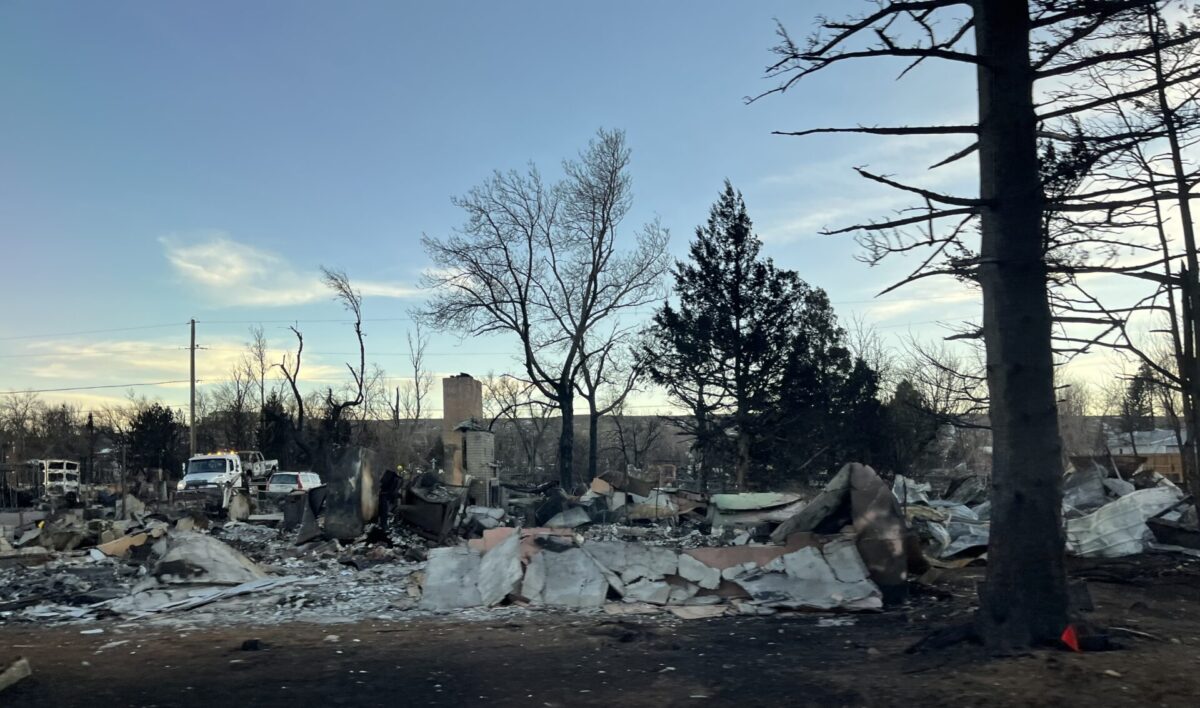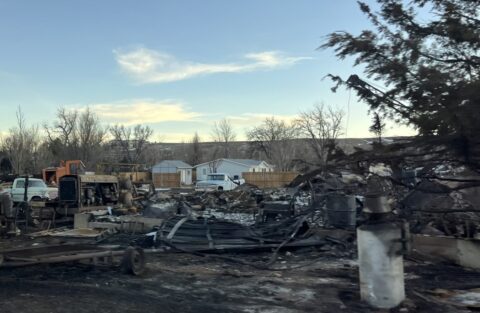
The first time you are evacuated from your home—whether for a hurricane, wildfire, or another weather-related threat—it’s an experience that burns in your memory. You associate it with a season. A smell. A phone call. It happened to me in 2020, when I was ordered to evacuate my home in the path of the Lefthand Canyon Fire in the Colorado foothills. I remember every minute as if it were an hour.
It was wildfire season. I was home. I was prepared. When you live in a climate danger zone, like the foothills of the Rocky Mountains in Colorado, there is a rhythm and acceptance to it all. Especially in autumn. That’s when you have your go-bag ready, and review your “Ten Minute Plan” in case you get the call saying “it’s time to go.” I was fortunate, because the fire never reached my neighborhood, and if it had, I could leave; some folks do not have the resources or ability to evacuate.
A year later, in 2021, when the Marshall Fire broke out in Colorado, it brought different concerns to mind. The fire didn’t spark in an area that knows this rhythm; it’s not the same level of danger zone—it’s more prairie than forest. Folks living there don’t do the rehearsals so familiar to the households in the foothills. If they do, they aren’t thinking of this in December. The six months leading up to that blaze were the warmest on record in Colorado. These unusually warm conditions intensified drought conditions in Colorado from the summer through the end of the year. The bone-dry summer and scorching autumn dried out grasses and transformed it to kindling just waiting to be sparked, which happened on the last day of 2021.

The experts at Climate Signals sum it up as directly as it can be done: “Higher temperatures are extending the fire season in the western U.S. by shifting conditions more characteristic of September and October to November and December.” The storm was fueled by hurricane-force winds that incinerated nearly 1,000 homes and structures that stood in a 20-mile path from Boulder to communities east of it in just one day. It stands as the most destructive wildfire in the state’s history. Again the folks at Climate Signals tied all the facts together as to the blaze’s ultimate cause. “Climate change, primarily caused by the extraction and combustion of fossil fuels, supercharges fires like the Marshall Fire through increased temperatures and exacerbated drought. In all, an estimated 6,000 acres were burned by the fire.”
Because of the holidays, I happened to be away the day of the Marshall Fire. I watched the Twitter updates all day, waited for texts from friends and loved ones about their status. Days after the fire, I returned to Colorado and drove through the miles and miles of destroyed land, still smoking. The only sign of the previously-standing houses were the remaining chimneys that dotted the rubble. Driving farther west into Boulder, the horizon presented a handful of wind turbines placed at the National Renewable Energy Lab just outside of town. It was a metaphor that I can at least partially unpack: black charred houses in the rearview mirror, and the promise of a cleaner, safer energy source that might mitigate future fires on display ahead.
Wildfires will always be a way of life in the West, just as hurricanes and droughts come and go elsewhere. But like the supercharged hurricanes we see that are bigger, wetter, and more destructive, this wildfire showed exactly what we can avoid if we embrace a clean energy future. Wildfire season doesn’t have to extend until New Year’s Eve, the droughts don’t have to last decades, and the hurricanes don’t have to follow one another like they are in a chorus line. To avert these destructive impacts of climate change—and to improve air and water quality and the health of our nation’s residents—we need to stop burning oil, gas, and other harmful fuels and advance wind and solar energy, electric vehicles, more efficient buildings, and other cleaner solutions.
We are making progress. Since 1991, Energy Foundation has been investing in solutions to transition the U.S. economy to cleaner, equitable sources of energy to tackle the climate crisis. The pace of progress is beginning to match the urgency we need. Fifteen U.S. states have now committed to transition to using 100 percent clean energy sources. More than half of the nation’s population lives in a 100 percent clean state or local jurisdiction. Transitioning away from coal, methane gas, and even oil from power portfolios in the decades ahead will be a massive step toward reducing carbon pollution while transforming our economy to one built with clean American power. Washington, DC, has even gotten in on the action, enacting policies like the Inflation Reduction Act to incentivize an escalation of clean energy in our homes, our businesses, and modes of transportation. But this progress has been hard fought, will take decades to enact, and will come with many, many decision points requiring our grantees across the country, working in every sector of the economy, to work for change.
Unfortunately we will all see the consequences of climate change near our homes while we fight for emissions reductions. We all know well that fires don’t impact just the people whose homes and businesses lie in the path of destruction. Wildfires in Canada this spring left much of the Eastern Seaboard in an acrid haze, creating unhealthy air quality for everyone, especially folks who work outside or couldn’t otherwise escape the smoky conditions. Climate change doesn’t care where you live. Those with the least means will be disproportionately impacted. And the frontlines of the climate crisis will only expand the longer we wait to embrace clean energy.
All it takes is one visit to a destroyed community to remind anyone of what is at stake. But as those turbines on the horizon reminded me of that bizarre day in Colorado: The solutions are out there if we get moving.
